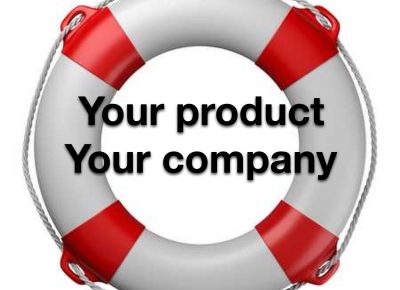Monthly Archives: January 2020
Processes Should be Simple and Executable

Do you have some broken processes…. So let me guess you created more processes to fix your broken ones?….aaaahhhhhh!
For those of us who love the crazy world of operations management, we know that it can often be viewed as juggling multiple glass balls in the air everyday! In the home remodeling industry, specifically operations management, this equates to the many moving parts on a day to day basis. The ultimate goal is to keep the glass balls in the air and if one happens to fall, not to have it break! The biggest mistake I see organizations make (and I have even been guilty of it myself) is creating additional processes because the initial process was not effective, not being executed properly, or not adopted fully within the organization. Usually it is some combination of these three. These critical mistakes within operations management result in multiple balls being dropped and glass all over the floor!
“It wasn’t an effective process from the beginning”, you say to yourself as an operations leader. “Who created this process” is often what staff members are saying to themselves or among each other. “Nobody even asked me how this is done and it’s missing a bunch of necessary steps,” they tend to mumble as they ignore the new process and go back to “what they know works”! So, let’s step into the mindset that if a process is created with all contributors involved, it will likely be more effective and it will have staff buy-in because they assisted in creating it. Having staff buy-in also increases the chances of it being executed with integrity across the board!
If you immediately thought to yourself, “I have no problem with this but worry about having an inclusive environment with my team when creating processes”, then my question to you is, do you have the right A-Team in place to create the culture necessary for growth? That will have to be a conversation for another day! The simple fact is that inclusion is the key to creating successful and productive processes. Your team knows the job they do daily and that is something you need to respect, capitalize on and let SHINE through inclusion!
There are many ways to have inclusion within your team to gather the needed info, test the processes, and implement with full buy-in. Here are a few examples:
Introduce the idea of a change or the new process to the group as a whole with an exciting kick off meeting. Even if you don’t have the finalized changes yet, the excitement being built around changes to come is also very important. Secret, siloed meetings are the best way to build a negative mindset and manifested issues.
(1) The tone of this kick off is stern, positive and clear that the changes to come will not be optional, so let’s get ready!
(2) Make it fun, have a continental breakfast or working lunch which can include a fun icebreaker warm up!
(3) Allow your staff to be human and express fears of the change, but don’t allow them to hijack your meeting! Note: I never hold a team meeting without a parking lot board ready and waiting (with a little bit of the mamma side-eye when they try the hijack move on me).
(4) Build work groups for large changes: Send out a short survey that each team member can complete individually in order to communicate which duties they handle, ensuring that proper work groups are built for input on the process.
(5) Have team members document and submit their current process to ensure no steps are missed
(6) Group work sessions are great for what I like to call “reality vs. wish list mapping of the new process”. This is where you map out the new process and have the discussions of “It sounds good but does it really fit and make sense of what we are trying to accomplish with the change?
Again, these are just to name a few of the approaches than can be taken to launch a new and successful process! Keeping in mind our goal as leaders is to grow in all aspects of business we must remember that growth requires flexibility. The world we live in today is much different than the world of yesterday. Therefore, home improvement cultures and processes need to evolve and adapt to be better suited to modern times. I often find myself viewing things through the eyes of my young adult children to better understand the differences. Therefore, I am going to conclude this in using a phrase from my thirteen year old daughter, as her view often amazes me from the perspective of the youngest child with two older brothers. Often, they exclude her or pick on her and she reminds them that eventually they will need her (as they often do) by saying this simple phrase in response to their antics “that’s cool bro, later I want you to keep that same energy.” What she is saying is the 2020 version of “treat others how you want to be treated” or “what you put out into the universe is what you get back.” So remember leaders, if you don’t want to live with the broom out, cleaning glass up off the floor all the time, be inclusive with your processes and watch your team reward you by “keeping that same energy”!
 Jameka Spencer applies expert knowledge, industry experience, and relentless energy to improving an operations team, while uplifting your company culture. She is known by her peers throughout her career to be a highly organized, driven business partner that is passionate about her work and driven by results which are evident in her ability to drive and motivate others.
Jameka Spencer applies expert knowledge, industry experience, and relentless energy to improving an operations team, while uplifting your company culture. She is known by her peers throughout her career to be a highly organized, driven business partner that is passionate about her work and driven by results which are evident in her ability to drive and motivate others.
Better Branding Does Not Equate to More Revenue

Better branding does not equate to higher sales revenues. I see so many home improvement companies get sucked in by a good advertising rep, convincing them that branding is the key. Now, I do believe that branding has a place but as a home improvement company, it is easy to brand yourself broke! I know of a company that was running branding related ads on the radio recently. After a lengthy period of time without any returns, they wisely decided to run some spots with a direct call to action which was designed to generate leads. The radio salesperson was against it, admitting that they would likely generate leads but stating that they will become addicted to the lead flow and from that point forward, all they will want to do is run spots that make leads. My thought was “Exactly! Let’s start making some some leads!” As you might imagine, the aggressive calls to action worked and for the first time, radio provided the home remodeler with an excellent ROI.
I must admit, the advertising rep was right about one thing. The economy is strong. As a result, I see many in our industry doing well. It is during these times of prosperity that many companies do develop an addiction. That addiction is inbound leads. They certainly are difficult to resist. So, why not accomplish both? Keep branding as a core part of your strategy but generate some immediate returns as well. My most successful clients find a way to educate their target audience during the first portion of their ad spots and then drive traffic to the phone and web with an aggressive call to action at the end. With this format, you can build a powerful brand and still drive lead generation.
But what happens when that phone stops ringing? That is the real question. The truth is that you need to have a well balanced marketing mix. This should include both inbound and outbound lead generation. You need to be able to “take it and make it.” This means it is important to take the inbound calls when they come but you must be able make leads when the volume of inquiries start to diminish. If your marketing relies heavily on inbound leads, I strongly urge you to take a look at how you can diversify. Experience has taught me that at some point, whether it’s six months or three years down the road, inbound inquiries will slow down or stop all-together. The companies that have diversified are much more likely to MAKE things happen!
I hear that there is a big election coming up in November. History has shown that time and time again, inbound lead flow suffers tremendously when the air waves are polluted with politics and the advertising reps are flush with funding from campaign dollars. Will you be ready? For a free consultation on how to diversify and supercharge your lead generation efforts, visit www.TonyHoty.com
 Kyle Powers got his start in direct sales while working in new business development in the cable industry. He enjoyed a successful career building high performance door-to-door teams all across the country. In 2008 Kyle took a leap of faith in to the Home Improvement Industry.
Kyle Powers got his start in direct sales while working in new business development in the cable industry. He enjoyed a successful career building high performance door-to-door teams all across the country. In 2008 Kyle took a leap of faith in to the Home Improvement Industry.
Serve Not Sell Mentality – Creating Employee Buy In

Let’s look at creating employee buy in to the Serve Not Sell mentality. If you have followed me for any amount of time, you may be familiar with the saying around Tony Hoty Consulting- “Serve not sell” While anyone could gain an idea of what we mean, I want to explore another context that I believe is entirely overlooked in our industry and many other sales and marketing organizations out there.
The principle of serve not sell means that if we put all our eggs in the “helping to solve the customer’s problem” basket vs the “here’s my product and you should buy it” basket, we will be more successful in the long run while creating an even better consumer experience.
How this can be utilized to grow your organization at scale, is by lacing this concept into your training and recruiting processes. Today, in the year 2020 it is more important than ever to the average job seeker, that they end up working at a company they can truly make a difference with while adding value to the consumer. So the question becomes how do we do that?
Serve Not Sell – in My Experience
My experience is really all I can share. And while you may agree or disagree with my stance, the fact remains there are very few companies out there that understand and know how to create effective buy-in with their team. And that’s one thing I can say without a shadow of a doubt, we know how to do. At the same time if you do not do it in the very beginning during training of new hires, it can be extremely challenging to come back later and create it after they have been with your organization for a while. Just because old habits die hard.
For example, we have noticed if we train marketers to get second phone numbers or emails for each prospect from the beginning- they are able to achieve those goals 80% of the time. While if we have them establish their presentation, and later try to incorporate that part- they only end up accomplishing it 50% of the time. Therefore it’s the change to what’s already made a habit that is the most challenging.
Buy-in works the same way. If In the first few day’s, we establish what we are here to do, why we do it, and what their job truly is, our employees understand the nature of what they are doing is helping. I only came to this understanding by knocking doors, and standing on the porch of a homeowner in tears while they tell me their horror story of what one of my unscrupulous competitors had done. Whether it be they took the money and ran, went out of business and the warranty went too, or just plain won’t follow up on the promises made at the kitchen table, all scenarios had left me walking away thinking “if I only had gotten to these people a couple years sooner- this never would have happened to them.”
This led me to have a real sense of pride in what I did. No matter how many doors slammed in my face, hang ups happened on the phone, or how many people at an event told me they didn’t want what I had before I even had a chance to tell them, I knew I had a mission- and that I literally owed it to my prospects to close them for an appointment. I relate it very much to the game show- “let’s make a deal.” Behind door 🚪 number 1, is my company, which won’t be the cheapest initially but will take care of the customer and service them effectively. So I know what’s behind door number one. But doors 2 & 3 are closed. Behind them could be a great experience, but could also be a terrible experience like the one so many homeowners have unfortunately had to share with me over the years of my experience. We make it very clear to our marketers, we all know what’s behind door 1, door 2 and 3 could be a crap shoot. You could end up at a decent product at a lower price, or you might end up with a company taking your money and then filing bankruptcy. Doesn’t it only make sense to bet on the for sure great experience?
Our marketers realize they owe it to the prospect to get our rep in front of them. One thing to remember being, people do what’s in their best interest. And if our marketing staff feels internally (not externally meaning bribed by incentives or their pay check) that the right thing to do is to make sure we get an appointment scheduled- they will do it far more often and will also do it without you standing over their shoulder watching. They do it because they BELIEVE they are helping. And they are! This will carry your team so much further than just saying “you need to hit your goal because we want you to make money”. Because what happens when that person gets off to a slow start for the day? Does the idea that against all odds they could actually make some money if they worked harder truly effect changed behavior? My experience has been that if they believe they are helping, their determination with every single rejection they receive- only Becomes that much stronger. That your lead generators are on a mission- a mission to make the world a better place, one home at a time.
You are probably thinking 🤔 “great Megan, so HOW do we do that?”
5 things we do to create employee buy-in to the Serve Not Sell mentality
- We present the company story we would normally show a customer, to our new hires in training.
- We share with them real life experiences when a customer had a poor experience and how we were able to make it right for them eventually- but the customer had to end up spending more because they bought the product twice.
- We share and make them a part of the community giving back we do.
- We create and enforce a culture of positivity by providing book studies, financial planning courses and doing little things regularly to show our appreciation.
- We celebrate every sale and every win with everyone in the company through a thread on an app.
This list is only a beginning by a long shot, but you get the idea. When the people you have love the company they work for, turnover goes down, employee production increases, and you will have new employee referrals coming in at extremely high rates. When you create a culture of winners, many other people want to then be a part of it.
It’s important to remember, the day will come where show attendance is down, where you hit a neighborhood that one of your competitors just hit, and there will be a time no one is picking up the phone when your call center calls. Your team must feel an internal duty to keep pushing through even when the scenario isn’t ideal. They must know that the initial objections from our customer in the first thirty seconds is only buyer resistance and that it could be based on the well-earned black eye our industry has.
It’s our job as lead generation professionals to not take this personally, and inside to realize they have no idea who we are, or that we are the gold star in a deep sea of bottom feeders. All they know is we sell a product that is the same classification of another product they heard of or had a bad experience with. It’s not their fault- they are just trying to protect themselves. And we must be ready with our army of effective processes and scripting- in order to help them gently drop their guard and to buy us 30 seconds to show them that we are different. The experience has to be so powerful- that it doesn’t even resemble the experience they had or heard about before.
 Megan Beattie has spent the last 19 years as a student and practitioner of marketing and sales process with a specific focus on lead generation. Learn More About taking your lead generation to the next level by requesting a FREE CONSULTATION.
Megan Beattie has spent the last 19 years as a student and practitioner of marketing and sales process with a specific focus on lead generation. Learn More About taking your lead generation to the next level by requesting a FREE CONSULTATION.
